China, the world’s most populous country, is a land of rich history, diverse culture, and rapid modernization. With a civilization that dates back over 5,000 years, China has contributed significantly to global advancements in philosophy, science, art, and technology. The Great Wall, Forbidden City, and Terracotta Army stand as testaments to its glorious past, while cities like Beijing and Shanghai showcase its economic and technological prowess.
China is known for its breathtaking landscapes, from the towering Himalayas in the west to the picturesque Li River in the south. Its economy, one of the largest in the world, thrives on manufacturing, innovation, and global trade. With a unique blend of tradition and progress, China remains a fascinating country that continues to shape the world in numerous ways.
China is a country where ancient traditions blend seamlessly with modern innovations, where towering skyscrapers coexist with centuries-old temples. Whether you’re a history buff, nature lover, or foodie, China offers something for every kind of traveler. So, if you’re planning your next trip, here’s a rundown of the top 10 tourist places in China that you absolutely must visit.
1.The Great Wall of China: A Monument to History(Top 10 Tourist Places in China : You must have visit.)
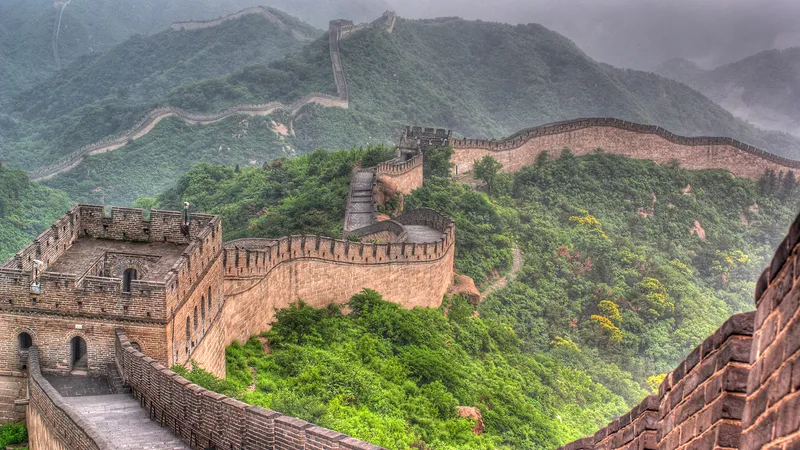
The Great Wall of China is one of the most extraordinary architectural feats in human history, stretching over 13,000 miles and weaving through rugged mountains, vast deserts, and rolling plains. Built over centuries, beginning as early as the 7th century BC and extensively expanded by the Qin, Han, and Ming dynasties, the wall was originally constructed as a defensive barrier to protect Chinese territories from invasions by nomadic tribes. Made from various materials such as tamped earth, wood, bricks, and stone, the wall evolved in structure and strength as different dynasties reinforced and extended it. Beyond its military purpose, the Great Wall played a crucial role in trade and communication, serving as a checkpoint along the Silk Road, where goods, ideas, and cultures were exchanged between China and the rest of the world. Today, it stands not just as a military relic but as a symbol of China’s resilience, determination, and architectural brilliance. Some of the most famous sections, like Badaling and Mutianyu, are well-preserved and draw millions of tourists every year, while lesser-known parts, such as Jiankou and Simatai, remain rugged and untouched, offering a glimpse into the wall’s original state. Walking along its ancient stones, one cannot help but feel connected to the countless soldiers, workers, and emperors who contributed to its creation. Recognized as a UNESCO World Heritage Site, the Great Wall continues to be a powerful reminder of China’s historical legacy and remains a testament to human perseverance and ingenuity.
Let us begin with the obvious, but absolutely breathtaking: the Great Wall of China. This ancient wonder, spanning 13,000 kilometers, is more than just an architectural marvel. It is a living piece of history, demonstrating the persistence and creativity of those who erected it centuries ago.
2. The Forbidden City: Stepping Into Imperial China(Top 10 Tourist Places in China : You must have visit.)
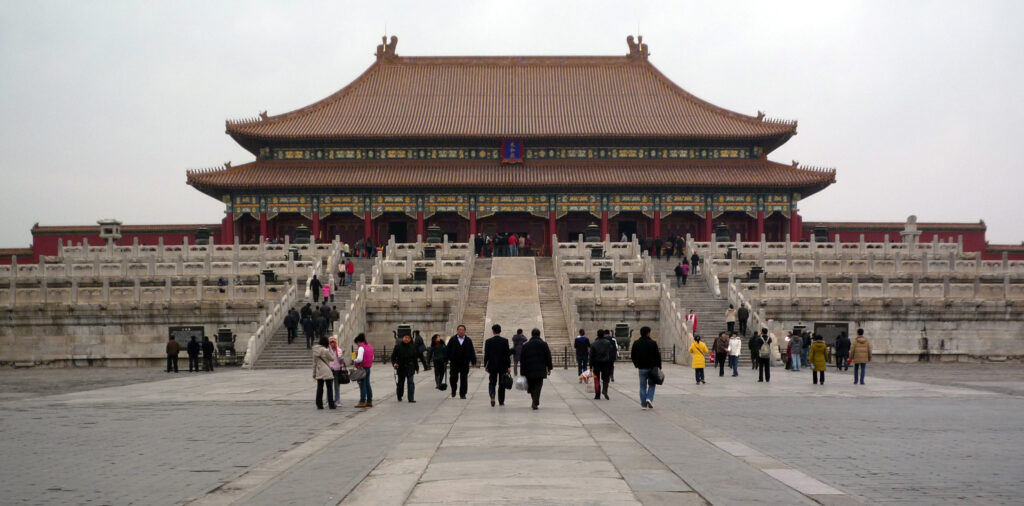
The Forbidden City, located in the heart of Beijing, is one of the most breathtaking and historically significant landmarks in China, offering a glimpse into the grandeur of its imperial past. Built during the Ming Dynasty between 1406 and 1420, this vast palace complex served as the political and ceremonial center of Chinese emperors for nearly 500 years, housing 24 rulers from the Ming and Qing dynasties. Spanning over 180 acres with nearly 1,000 preserved buildings, the Forbidden City is a masterpiece of traditional Chinese architecture, featuring golden rooftops, red walls, and intricate woodwork adorned with dragon and phoenix motifs symbolizing imperial power. The complex was designed with strict hierarchical structures, reflecting the deep-rooted Confucian principles that governed imperial China—only the emperor and select officials were allowed access to its inner sanctums, while commoners were strictly forbidden, giving the site its legendary name. Beyond its architectural splendor, the Forbidden City was a hub of political intrigue, with countless stories of power struggles, secret passageways, and elaborate ceremonies that shaped Chinese history. Today, as part of the Palace Museum, the Forbidden City welcomes millions of visitors from around the world, allowing them to walk through the grand halls, explore the emperor’s throne room, and admire priceless treasures, paintings, and artifacts from centuries past. Recognized as a UNESCO World Heritage Site, it remains one of the most well-preserved and awe-inspiring palace complexes in the world, standing as a symbol of China’s rich cultural heritage and imperial legacy.
3. The Terracotta Army: A Fascinating Peek into the Past
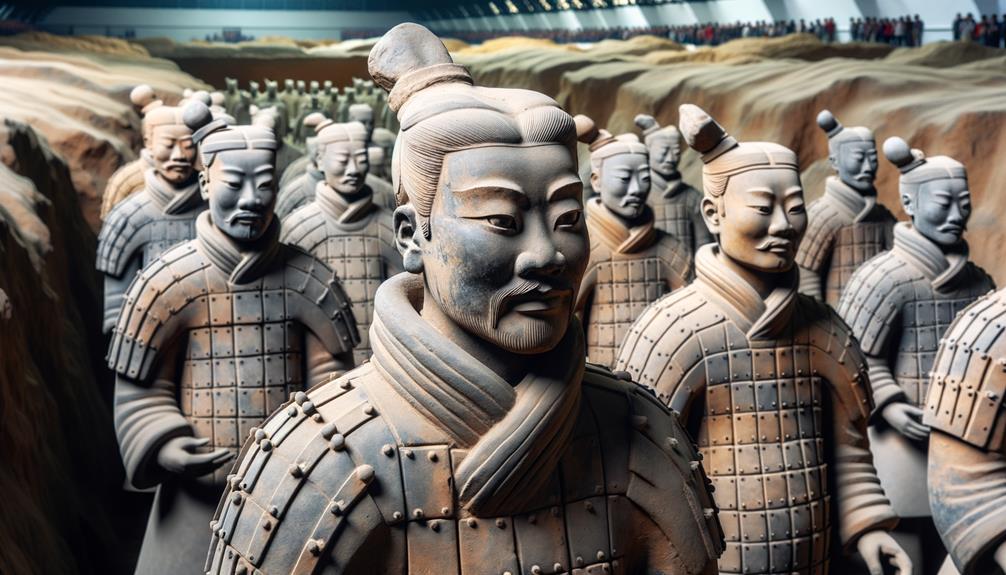
The Terracotta Army stands as one of the most remarkable archaeological discoveries of all time, offering a captivating glimpse into China’s ancient history and the ambition of its first emperor, Qin Shi Huang. Discovered in 1974 near Xi’an, this vast underground army was created over 2,000 years ago to accompany the emperor in the afterlife, reflecting the deep-rooted belief in life beyond death. Comprising more than 8,000 life-sized soldiers, along with chariots, horses, and weapons, the army was meticulously crafted with astonishing detail—each soldier possesses unique facial expressions, hairstyles, and armor, showcasing the artistry and craftsmanship of the Qin Dynasty. Historians believe that over 700,000 laborers worked tirelessly for decades to construct this grand tomb complex, which also includes intricate bronze sculptures, acrobats, and musicians meant to serve the emperor in his eternal reign. Despite being buried for centuries, the Terracotta Army remains remarkably well-preserved, though the original vibrant colors of the figures have faded over time due to exposure to air. The site continues to reveal new mysteries, with archaeologists still uncovering hidden chambers and artifacts that shed light on ancient Chinese civilization, military strategies, and burial customs. Today, the Terracotta Army is housed within the Mausoleum of Qin Shi Huang, a UNESCO World Heritage Site, drawing millions of visitors who marvel at its sheer scale and historical significance. As a symbol of power, immortality, and the grandeur of China’s imperial past, the Terracotta Army remains an awe-inspiring testament to human ingenuity and the enduring legacy of Emperor Qin Shi Huang.
The Terracotta Army, one of China’s most remarkable archaeological finds, may be found in Xi’an. Thousands of life-sized statues of warriors, horses, and chariots, buried to defend Emperor Qin Shi Huang in the afterlife, making this a must-see destination.
Standing before these troops, each with their own distinct facial expression, is nothing short of captivating. It’s as if the emperor’s army is still on guard, centuries later. During my visit, I couldn’t help but marvel about the endless hours and expertise required to create each of these beautiful statues.
Fun fact: The Terracotta Army has over 8,000 warriors, and archaeologists are continually discovering more today!
4. The Li River: Nature’s Masterpiece in Guilin
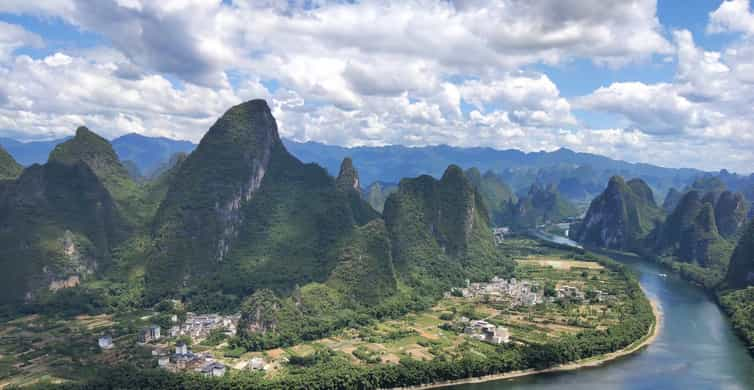
Flowing through the heart of Guangxi Province, the Li River is one of China’s most breathtaking natural wonders, celebrated for its surreal karst landscapes, mist-covered peaks, and tranquil waters. Stretching approximately 437 kilometers from Guilin to Wuzhou, the most famous and picturesque section of the river lies between Guilin and Yangshuo, where towering limestone mountains rise dramatically from the water, creating a scene reminiscent of an ancient Chinese painting. For centuries, poets, painters, and travelers have been captivated by the river’s ethereal beauty, immortalizing it in countless artworks and verses. A cruise along the Li River is an unforgettable experience, offering mesmerizing views of iconic landmarks such as Elephant Trunk Hill, a rock formation resembling an elephant drinking from the water, and the legendary Nine Horses Fresco Hill, where natural patterns on the cliffside are said to resemble galloping horses. Along the journey, traditional fishing villages dot the banks, where local fishermen still practice the ancient art of cormorant fishing, using trained birds to catch fish. The ever-changing scenery, with mist swirling around jagged peaks and reflections dancing on the river’s surface, creates an almost dreamlike atmosphere. Recognized as one of the most beautiful rivers in the world, the Li River is not only a major tourist attraction but also a cultural symbol of China’s natural splendor. Whether explored by boat, bamboo raft, or by cycling along its scenic trails, the Li River offers an unparalleled escape into nature’s masterpiece, leaving visitors with a deep appreciation for China’s enchanting landscapes.
The Li River in Guilin is a nature lover’s dream come true. The 52-mile voyage along the river is a visual feast, with karst mountains rising sharply from the water to create a scene straight out of a Chinese painting.
I recall drifting down the river on a bamboo raft, with mist curling around the mountains, creating an almost supernatural environment. It was one of those trip experiences that will stick with you forever.
Pro tip: For a more intimate and quiet experience, choose smaller bamboo rafts over larger tourist boats.
5. Zhangjiajie National Forest Park: A World of Floating Mountains
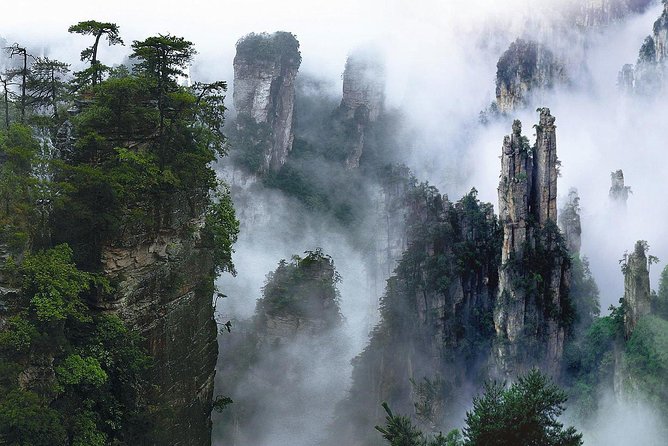
Zhangjiajie National Forest Park, located in Hunan Province, is a breathtaking natural wonder that seems to belong to another world, with its towering sandstone pillars, mist-covered peaks, and lush greenery creating an ethereal landscape. Spanning over 11,900 acres, this UNESCO World Heritage Site is best known for its surreal “floating mountains,” which served as inspiration for the otherworldly scenery in the blockbuster movie Avatar. The park’s most famous peak, the Hallelujah Mountain, appears to defy gravity, rising dramatically from the forest floor with sheer cliffs and jagged edges shrouded in mist. These striking quartz-sandstone formations, shaped by millions of years of erosion, reach heights of over 1,000 feet, offering jaw-dropping views at every turn. Adventurers can explore the park’s wonders through a network of hiking trails, glass bridges, and scenic cable cars that provide unparalleled panoramic views of the landscape. The Zhangjiajie Grand Canyon Glass Bridge, the world’s longest and highest glass-bottomed bridge, offers a heart-pounding experience as visitors walk across its transparent floor, seemingly suspended in midair above the deep canyon below. The park is also home to diverse wildlife, including rare species such as the Chinese giant salamander and macaques that roam freely among the towering cliffs. As one of China’s most awe-inspiring natural destinations, Zhangjiajie National Forest Park is a paradise for nature lovers, photographers, and thrill-seekers alike. Whether standing atop one of its misty peaks or gazing up at the towering formations from below, a visit to Zhangjiajie feels like stepping into a mythical realm where nature’s artistry reaches its most spectacular heights.
If you have watched the film Avatar, you will be familiar with Pandora’s bizarre, floating mountains. Believe it or not, these alien forms were inspired by Zhangjiajie National Forest Park in Hunan Province, China.
Walking through this park seems like entering another dimension. The towering sandstone pillars, some of which reach over 1,000 feet, make it clear why this location might inspire such fantastic panoramas. For the daring, there’s even a glass skywalk that provides a dizzying perspective of the valley below!
Adventure tip: Take the Bailong lift, the world’s tallest outdoor lift, for breathtaking vistas.
6. The Potala Palace: Tibet’s Sacred Treasure
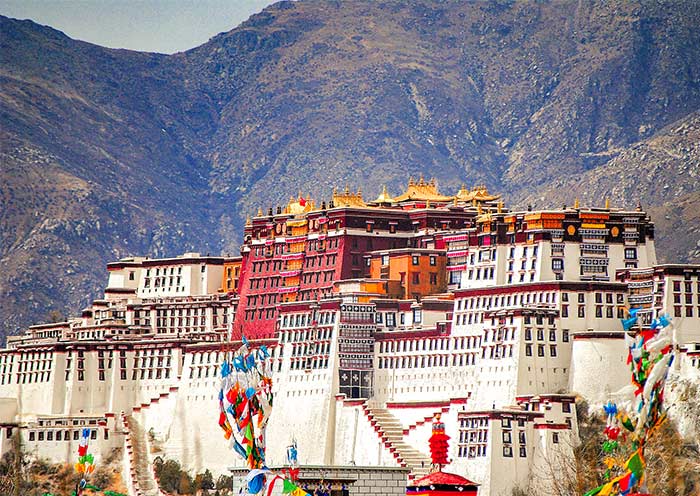
Perched majestically atop Red Hill in Lhasa, Tibet, the Potala Palace is an architectural and spiritual marvel that stands as a symbol of Tibetan Buddhism and the region’s rich cultural heritage. Originally built in the 7th century by Tibetan King Songtsen Gampo and later expanded in the 17th century under the rule of the Fifth Dalai Lama, this grand fortress-like structure served as the winter residence of the Dalai Lamas for centuries. Rising over 13 stories and containing more than 1,000 rooms, the palace is a breathtaking fusion of religious sanctity, historical significance, and artistic brilliance. Its striking white and red walls symbolize both political and spiritual power—the White Palace housed the Dalai Lama’s living quarters and administrative offices, while the Red Palace was dedicated to religious studies, sacred shrines, and the tombs of past Dalai Lamas, lavishly adorned with gold, jewels, and intricate murals. Pilgrims from across Tibet and the world journey to the Potala Palace to offer prayers, spin prayer wheels, and pay homage to its sacred relics, including thousands of statues, ancient scriptures, and rare Buddhist artifacts. Beyond its religious importance, the palace offers stunning panoramic views of Lhasa, with the towering Himalayas serving as a breathtaking backdrop. Recognized as a UNESCO World Heritage Site, the Potala Palace remains a living testament to Tibet’s spiritual devotion and resilience. Visiting this sacred treasure is a deeply moving experience, where one can feel the echoes of centuries of faith, wisdom, and tradition resonating through its towering halls and silent corridors.
The magnificent Potala Palace lies atop a hill in Lhasa, Tibet. This palace, which was once the Dalai Lama’s winter residence, represents Tibetan Buddhism and is rich with centuries of sacred art, scriptures, and relics.
The travel to Lhasa alone is an adventure, with its high altitude and rich cultural heritage. But standing in front of the Potala Palace, with its red and white walls shining against the blue sky, is a unique sensation.
Travel tip: To avoid altitude sickness, allow yourself enough time to acclimatize in Lhasa. Additionally, tourists visiting Tibet must obtain a specific travel authorization.
7. The Bund in Shanghai: A Fusion of East and West
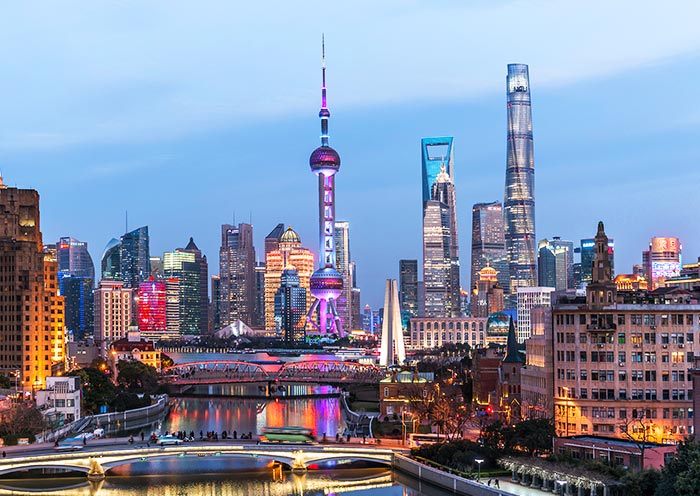
The Bund, a spectacular waterfront promenade in the heart of Shanghai, is a living testament to the city’s rich history and its seamless fusion of Eastern and Western influences. Stretching along the western bank of the Huangpu River, this iconic boulevard is lined with grand colonial-era buildings that date back to the late 19th and early 20th centuries, reflecting Shanghai’s past as an international trading hub. Once home to foreign banks, embassies, and trading houses, these neoclassical, Gothic, Baroque, and Art Deco structures stand in striking contrast to the modern skyscrapers of Pudong’s financial district just across the river, where the futuristic Oriental Pearl Tower and the towering Shanghai Tower dominate the skyline. The Bund’s charm lies in its ability to bridge old-world elegance with contemporary vibrancy—by day, visitors can admire the intricate architectural details of historic landmarks such as the Customs House and the Peace Hotel, while by night, the area transforms into a dazzling spectacle of lights, with the glowing facades of old buildings on one side and the shimmering neon skyline of Pudong on the other. The Bund is not just a historical landmark but also a cultural and social hotspot, where visitors can take a leisurely stroll along the river, enjoy a scenic Huangpu River cruise, or experience fine dining in high-end restaurants with breathtaking views. From its bustling past as a foreign concession to its modern role as a symbol of Shanghai’s global influence, the Bund embodies the city’s unique blend of East and West, tradition and progress, making it one of the most captivating destinations in China.
Shanghai is China’s financial hub, and no visit is complete without a stroll along The Bund. This waterfront promenade offers stunning views of the modern skyline of Pudong, complete with its iconic skyscrapers like the Oriental Pearl Tower.
But what makes The Bund truly unique is the juxtaposition of old and new. On one side, you have futuristic buildings, while on the other, historic colonial architecture. It’s the perfect place to witness how China has evolved over the years.
When I visited The Bund, it was during sunset. The sight of the buildings lighting up against the darkening sky, reflected in the Huangpu River, was nothing short of magical.
Travel tip: Visit at night when the skyline is illuminated, and take a river cruise for an up-close view of the lit-up skyscrapers.
8. The Yellow Mountains (Huangshan): A Hiker’s Paradise
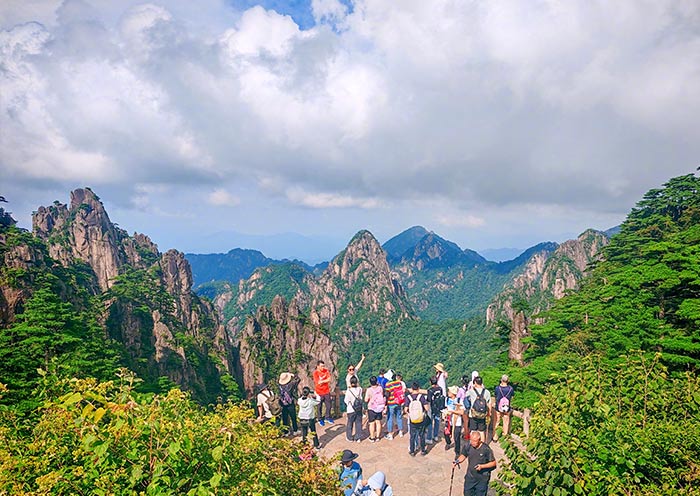
The Yellow Mountains, or Huangshan, are one of China’s most spectacular natural wonders, drawing adventurers, photographers, and nature lovers from around the world with their otherworldly beauty and legendary status in Chinese culture. Located in Anhui Province, Huangshan is famous for its dramatic granite peaks, ancient pine trees, mystical sea of clouds, and natural hot springs, making it a paradise for hikers and explorers. With over 60,000 stone steps carved into the mountainside, trekking through Huangshan is both a challenging and rewarding experience, offering breathtaking views at every turn. Some of the most famous peaks, such as Lotus Peak, Bright Summit Peak, and Celestial Capital Peak, rise sharply above the clouds, creating the illusion of floating islands suspended in the sky. The mountain’s twisted, weathered pine trees, like the iconic “Welcoming Guest Pine,” have inspired countless poets and painters for centuries, capturing the essence of resilience and beauty. The ever-changing weather adds to Huangshan’s mystical charm, as mist and fog frequently roll in, transforming the landscape into a dreamlike scene straight out of a classical Chinese painting. For those seeking a more leisurely experience, cable cars provide access to some of the highest peaks, allowing visitors to witness the awe-inspiring scenery without the strenuous climb. At sunrise and sunset, the mountains take on a surreal glow, with the golden light illuminating the jagged cliffs and creating a breathtaking panorama. Recognized as a UNESCO World Heritage Site, the Yellow Mountains offer not just a physical journey but also a spiritual one, where visitors can immerse themselves in nature’s grandeur and the deep cultural legacy that has made Huangshan a symbol of inspiration in Chinese art and philosophy for centuries.
If you enjoy trekking, the Yellow Mountains, also known as Huangshan, should be at the top of your list. Huangshan, known for its irregularly formed peaks, ancient pine trees, and cloud-filled waters, has some of China’s most breathtaking natural scenery.
The trek up can be difficult, but the view from the summit is worth every step. Standing above the clouds, with jagged peaks peeping through, is a difficult experience to express. It feels almost strange, as if you’ve walked into a Chinese watercolor picture.
Hiking tip: Spend a night at one of the mountain hotels to see the sunrise—it’s an unforgettable experience.
9. Chengdu’s Giant Pandas: A Cuddly Encounter

A visit to Chengdu, the capital of Sichuan Province, is incomplete without experiencing the adorable charm of its most famous residents—the giant pandas. Known as China’s national treasure, these gentle black-and-white creatures have long captured hearts worldwide, and Chengdu serves as the ultimate destination to see them up close in their natural-like habitat. The Chengdu Research Base of Giant Panda Breeding is the most renowned sanctuary, dedicated to the conservation, breeding, and study of these endangered animals. Walking through the lush bamboo forests of the reserve, visitors can watch pandas lounging lazily on tree branches, playfully tumbling around, or munching on their favorite snack—bamboo. The sight of baby pandas in the nursery is particularly heart-melting, as they clumsily explore their surroundings, wobbling on their tiny paws. The research base also provides educational insights into panda conservation efforts, highlighting the challenges of habitat loss and the importance of protecting this beloved species. Beyond the giant pandas, the center is also home to the elusive red panda, an equally adorable but lesser-known species with a fox-like face and fluffy tail. For those seeking an even closer experience, some sanctuaries in the region offer volunteer programs where visitors can help feed and care for the pandas under expert supervision. The entire experience in Chengdu is a delightful mix of education, conservation, and pure joy, allowing people to witness these iconic animals in a serene environment. Whether watching a panda mother tenderly care for her cub or seeing a playful group engage in a friendly wrestling match, the encounter leaves an unforgettable impression, reinforcing why the giant panda is not just a symbol of China but also a universal emblem of wildlife preservation and love for nature.
Who does not adore pandas? Chengdu is home to the world-famous Giant Panda Breeding Research Base, where visitors may observe these charming creatures up close. It’s a pleasure to watch them lie around, munching on bamboo, and the conservation effort going on here is extremely encouraging.
I went early in the morning, which is the greatest time to see pandas because they are most active. Seeing these gentle giants in person is a touching experience, and knowing that efforts are being made to conserve them makes it much more memorable.
Pro tip: If you’re lucky, you might spot panda cubs playing around. Visit in the fall, when panda babies are born!
10. Jiuzhaigou Valley: A Kaleidoscope of Colors
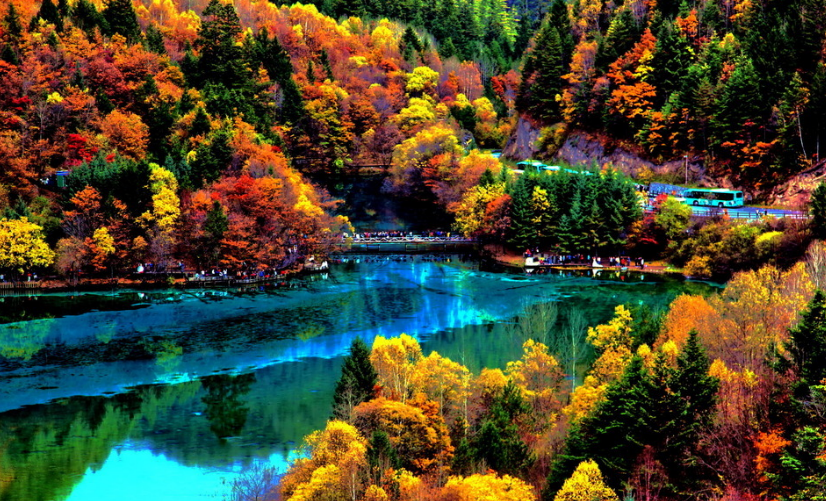
Nestled in the mountains of northern Sichuan, Jiuzhaigou Valley is a breathtaking natural wonder that looks like a scene from a fairy tale, with its shimmering turquoise lakes, cascading waterfalls, snow-capped peaks, and dense forests that transform into a kaleidoscope of colors with the changing seasons. This UNESCO World Heritage Site is famed for its crystal-clear, multi-colored lakes, such as the Five Flower Lake, whose vibrant hues of blue, green, and yellow are created by the presence of minerals and algae combined with the valley’s pristine water clarity. The sight of fallen tree trunks resting beneath the water’s surface, perfectly visible due to the lake’s remarkable transparency, adds an enchanting touch to the scenery. The valley is also home to the stunning Nuorilang Waterfall, one of China’s widest waterfalls, where water gracefully tumbles down rocky terraces, creating a mesmerizing display. In autumn, Jiuzhaigou reaches its peak beauty, as the forests explode into a dazzling array of red, orange, and golden hues, contrasting magnificently with the deep blues and greens of the lakes. Hiking through the valley, visitors can explore its many scenic spots, encounter rare wildlife like the endangered golden snub-nosed monkey, and experience the unique culture of the Tibetan and Qiang ethnic groups who have lived in harmony with nature here for centuries. Even in winter, when the waterfalls freeze into sparkling ice formations, Jiuzhaigou retains its magical allure. Whether visited for its stunning landscapes, its rich biodiversity, or its cultural heritage, Jiuzhaigou Valley offers an unforgettable experience that showcases the unparalleled beauty and diversity of China’s natural wonders.
Last but not least, Jiuzhaigou Valley will stun you with its natural splendor. It’s a seasonal visual delight with multicolored lakes, waterfalls, and snow-capped summits.
When I arrived in autumn, the vivid colors of the trees reflected in the crystal-clear lakes created a scene so stunning that it nearly seemed surreal. Jiuzhaigou is one of those places where you feel like you’ve walked into a storybook.
Travel tip: Visit during the off-season to avoid crowds. Autumn and spring are the greatest seasons to see Jiuzhaigou in all of its beautiful magnificence.
Also visit here – Top 10 Tourist Places in South Korea.

